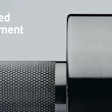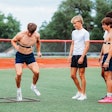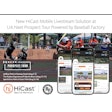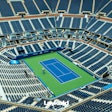Source: National Athletic Trainers' Association (NATA)
DALLAS, October 6, 2017 – The National Athletic Trainers’ Association (NATA) published today its new position statement, “Fluid Replacement for the Physically Active.” Created by the NATA Foundation, the statement appears online in the September 2017 Journal of Athletic Training, NATA’s scientific publication and presents evidence-based recommendations that promote optimized fluid-maintenance practices. The paper is an update to the previous NATA position statement on fluid replacement for athletes published in 2000.
A lack of adequate fluid replacement (hypohydration) and excessive intake (hyperhydration) can compromise athletic performance and increase health risks. Athletes need access to water to prevent hypohydration during physical activity but must be aware of the risks of overdrinking and exercise-associated hyponatremia (EAH) caused by excessive consumption of fluids (including sports drinks). During exercise, urination decreases and when this is combined with excessive consumption of fluids (including sports drinks), EAH can result from maintained or increased body weight during exercise lasting one hour or more. Drinking behavior can be modified by education, accessibility, experience and palatability.
“These guidelines are based on the most rigorous scientific evidence to help health care professionals and physically active individuals prevent exertional hyponatremia and dehydration,” says Brendon McDermott, PhD, ATC, FACSM, chair of the position statement writing group and associate professor of the Graduate Athletic Training Program at the University of Arkansas. “We’ve reinforced the importance of individualized hydration plans; that everyone should know his or her sweat rate and be well educated by athletic trainers or other health care professionals on how to assess those rates; and that the first morning void should be used to test hydration.”
Key Statistics:
- In humans, total body water and overall hydration are normally maintained within a relatively narrow range (1 percent hyperhydration to 3 percent hypohydration).1
- The benefits of optimal hydration status include maintaining athletic performance,2-5 maximizing the transfer of metabolic heat4,6 and facilitating recovery from exercise.7
- All may be compromised at modest levels of hypohydration (approximately 2 percent).4 However, extreme deviations on either end of the physiological range (hypohydration or hyperhydration) can compromise health and organ function.8-10
- A majority (more than 50 percent) of athletes in professional sports, collegiate athletics and high school and youth sports arrive at workouts hypohydrated.11-14 When access to fluids based on thirst and voluntary fluid intake is adequate during activity, humans replace roughly two-thirds of sweat losses.15-18
Highlights of the NATA Position Statement include:
Importance of Maintaining Fluid Balance and Regulation
- Among individuals in free-living conditions, habitual fluid intake and urine production are highly variable. Furthermore, sweat rate, thirst and fluid intake during exercise vary greatly. Therefore, individualized fluid maintenance recommendations need to be considered for physically active individuals.
Importance of Maintaining Euhydration (optimal total body water content as regulated by the brain)
- Individuals should not gain body mass (or body weight) during exercise (from pre-exercise to post-exercise) unless they begin activity with an unavoidable fluid deficit. If beginning exercise hydrated, individuals should not drink more fluid than they lose through sweat during exercise. Physically active individuals should monitor their weight before and after exercise to confirm adherence.
- Both severe clinical hypohydration and hyperhydration can damage athletic performance and are potentially fatal. Early signs and symptoms of these conditions may have some overlap, including thirst, general malaise, fatigue, headache and vomiting.
- Hypohydration leads to increased cardiovascular stress during exercise. Health care professionals should understand this fact, educate physically active individuals appropriately and apply strategies to prevent moderate to severe hypohydration.
Fluid Replacement
- Athletic trainers should educate physically active people, the parents of physically active children and coaches about sweat rate, sweat-rate calculation and developing an individualized hydration plan.
- Athletic trainers or other health care providers should help establish individualized hydration plans for physically active people (including those involved in team sports). The plans should include rehydration strategies that consider sweat rate, environment, acclimatization state, body size, exercise duration, exercise intensity and individual fluid preferences and tolerance.
- Heat acclimatization affects the fluid and electrolyte requirements of physically active people. Sweat losses increase and sweat-electrolyte concentrations decrease with heat acclimatization. Electrolyte losses may increase or decrease depending on the relative magnitude of each of these factors. Heat acclimatization should be a factor in developing individualized fluid replacement plans.
Beverage Additives
- The athlete’s diet and rehydration beverages should include sufficient sodium (enough to replace losses but not an excessive amount) to prevent or resolve imbalances that may occur as a result of sweat and urine losses.
- Pre-exercise sodium ingestion can expand vascular fluid volumes. Ingesting sodium during activity delays blood sodium decreases in some people but has a limited preventive effect in others. Sodium supplementation before and during exercise should be individualized based on specific losses and needs.
- Caffeine may increase short-term urine production at rest but does not induce urination during exercise. Athletic trainers should not discourage mild or moderate caffeine consumption before and every 30 minutes during exercise on the basis of dehydrating effects.
Hydration Assessment
- Calculating body mass change is a quick and effective way for the athletic trainer and other health care providers to track hydration status over the course of 24 hours.
- When clinicians use urine concentration values to assess hydration status, every effort should be made to utilize a first morning urine sample. Spot urine samples obtained at other times of the day can provide an incorrect assessment because they can be influenced by fluid intake, posture changes, exercise and food consumption.
- Personal cues to gauge hydration status include body mass, thirst, void frequency and urine color. From day-to-day or throughout a day, these all reflect relative hydration status and can provide individuals important feedback on their personal hydration status.
“This position statement provides evidence-based hydration recommendations for physically active people across the lifespan – whether recreational or participating in more competitive activities or longer, more intense regimens,” adds McDermott. “By putting these guidelines into practice, individuals can find the right balance to ensure they are safely and effectively well hydrated and ready to accomplish their exercise goals.”
About NATA: National Athletic Trainers’ Association (NATA) – Health Care for Life & Sport
Athletic trainers are health care professionals who specialize in the prevention, diagnosis, treatment and rehabilitation of injuries and sport-related illnesses. They prevent and treat chronic musculoskeletal injuries from sports, physical and occupational activity, and provide immediate care for acute injuries. Athletic trainers offer a continuum of care that is unparalleled in health care. The National Athletic Trainers' Association represents and supports 44,000 members of the athletic training profession.
Citations:
1. Raman A, Schoeller DA, Subar AF, et al. Water turnover in 458 American adults 40-79 yr of age. Am J Physiol Renal Physiol.2004;286(2):F394-F401.
2. Walsh RM, Noakes TD, Hawley JA, Dennis SC. Impaired high-intensity cycling performance time at low levels of dehydration.Int J Sports Med. 1994;15(7):392-398.
3. Bardis CN, Kavouras SA, Arnaoutis G, Panagiotakos DB, Sidossis LS. Mild dehydration and cycling performance during 5-kilometer hill climbing. J Athl Train. 2013;48(6):741-747.
4. Casa DJ, Stearns RL, Lopez RM, et al. Influence of hydration on physiological function and performance during trail running in the heat. J Athl Train. 2010;45(2):147-156.
5. MacLeod H, Sunderland C. Previous-day hypohydration impairs skill performance in elite female field hockey players. Scand J Med Sci Sports. 2012;22(3):430-438.
6. González-Alonso J, Mora-Rodríguez R, Coyle EF. Stroke volume during exercise: interaction of environment and hydration.Am J Physiol Heart Circ Physiol. 2000;278(2):H321-H330.
7. Vanderlei FM, Moreno IL, Vanderlei LC, Pastre CM, de Abreu LC, Ferreira C. Comparison of the effects of hydration with water or isotonic solution on the recovery of cardiac autonomic modulation. Int J Sport Nutr Exerc Metab. 2015;25(2):145-153.
8. Hew-Butler T, Rosner MH, Fowkes-Godek S, et al. Statement of the 3rd international exercise-associated hyponatremia consensus development conference, Carlsbad, California, 2015. Br J Sports Med. 2015;49(22):1432-1446.
9. Montain SJ, Sawka MN, Wenger CB. Hyponatremia associated with exercise: risk factors and pathogenesis. Exerc Sport Sci Rev. 2001;29(3):113-117.
10. Melin B, Jimenez C, Savourey G, et al. Effects of hydration state on hormonal and renal responses during moderate exercise in the heat. Eur J Appl Physiol Occup Physiol. 1997;76(4):320-327.
11. Volpe SL, Poule KA, Bland EG. Estimation of prepractice hydration status of National Collegiate Athletic Association Division I athletes. J Athl Train. 2009;44(6):624-629.
12. Yeargin SW, Casa DJ, Armstrong LE, et al. Heat acclimatization and hydration status of American football players during initial summer workouts. J Strength Cond Res. 2006;20(3):463-470.
13. Yeargin SW, Casa DJ, Judelson DA, et al. Thermoregulatory responses and hydration practices in heat-acclimatized adolescents during preseason high school football. J Athl Train. 2010;45(2):136-146.
14. Kavouras SA, Arnaoutis G, Makrillos M, et al. Educational intervention on water intake improves hydration status and enhances exercise performance in athletic youth. Scand J Med Sci Sports. 2012;22(5):684-689.
15. Armstrong LE, Johnson EC, Kunces LJ, et al. Drinking to thirst versus drinking ad libitum during road cycling. J Athl Train.2014;49(5):624-631.
16. Berkulo MA, Bol S, Levels K, Lamberts RP, Daanen HA, Noakes TD. Ad-libitum drinking and performance during a 40-km cycling time trial in the heat. Eur J Sport Sci. 2016;16(2):213-220.
17. Rivera-Brown AM, Ramírez-Marrero FA, Wilk B, Bar-Or O. Voluntary drinking and hydration in trained, heat-acclimatized girls exercising in a hot and humid climate. Eur J Appl Physiol. 2008;103(1):109-116.
18. Yeargin SW, Finn ME, Eberman LE, Gage MJ, McDermott BP, Niemann A. Ad libitum fluid consumption via self- or external administration. J Athl Train. 2015;50(1):51-58.





























